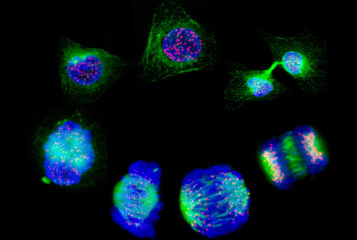CRISPR genome editing has been successfully used to treat three patients with blood disorders in a clinical trial.
Two US patients with beta-thalassaemia and one with sickle cell disease had their bone marrow stem cells edited to produce a different form of haemoglobin, which is normally only found in fetuses and newborns.
'The results [demonstrate] that CRISPR/Cas9 gene editing has the potential to be a curative therapy for severe genetic diseases like sickle cell and beta-thalassaemia,' said Dr Reshma Kewalrami, CEO and President of Vertex, which is running the study jointly with another US pharmaceutical company, CRISPR Therapeutics.
Both sickle cell and beta-thalassaemia are caused by mutations in a gene that produces haemoglobin, the protein in red blood cells that carries oxygen throughout the body. With limited treatment options, patients are often dependent on blood transfusions.
However, the human body is able to make another form of haemoglobin, encoded in a completely separate gene, which is normally only expressed during fetal development and is switched off soon after birth.
In the clinical trial, blood stem cells were removed from the patients and a control gene that turns off the production of fetal haemoglobin was inactivated. Patients were given chemotherapy to remove remaining bone marrow stem cells before they were replaced by the edited cells. The patients were then able to make fetal haemoglobin as adults.
The results of the ongoing trial, presented at the virtual Annual European Hematology Association Congress, reported that two beta-thalassaemia patients were transfusion independent at five and fifteen months after treatment, and the sickle cell patient was free from painful crises at nine months after treatment.
All three patients suffered significant side effects (from which they all recovered), but these were thought to be as a result of the chemotherapy rather than genome editing. Chemotherapy can also have long-term effects including infertility.
It is hoped that this treatment will have long-lasting and durable effects in patients with inherited blood diseases, and early clinical data appear promising. However, patients will need to be followed up throughout their lives to record any changes.
'These highly encouraging early data represent one more step toward delivering on the promise and potential of CRISPR/Cas9 therapies as a new class of potentially transformative medicines to treat serious diseases,' said Dr Samarth Kulkarni, CEO of CRISPR Therapeutics.
Sources and References
-
Three people with inherited diseases successfully treated with CRISPR
-
CRISPR gene editing shows promise in blood disease update
-
CRISPR and Vertex show durability of gene-editing therapy, hoping for one and done treatment
-
More early data revealed from landmark CRISPR gene editing human trial
-
CRISPR Therapeutics and Vertex announce new clinical data for investigational gene-editing therapy CTX001™ in severe haemoglobinopathies at the 25th Annual European Haematology Association (EHA) congress
-
New CRISPR, gene therapy results strengthen potential for treatment of blood diseases







Leave a Reply
You must be logged in to post a comment.